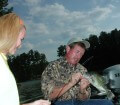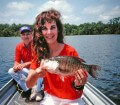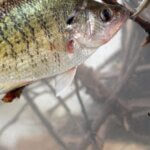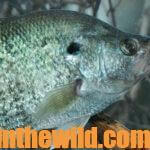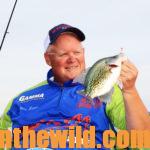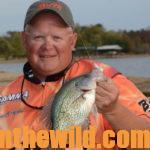John’s Note: Fishing over the years with some of the greatest crappie fishermen in America, I’ve discovered a couple of all-important secrets to catching really big crappie. If you fish for crappie in a lake that traditionally has homed monster-sized crappie in a state that manages its crappie in places where no other crappie fishermen fish, you’ll consistently catch bigger crappie. You can adapt these strategies to where you fish and catch big slab crappie throughout the year.
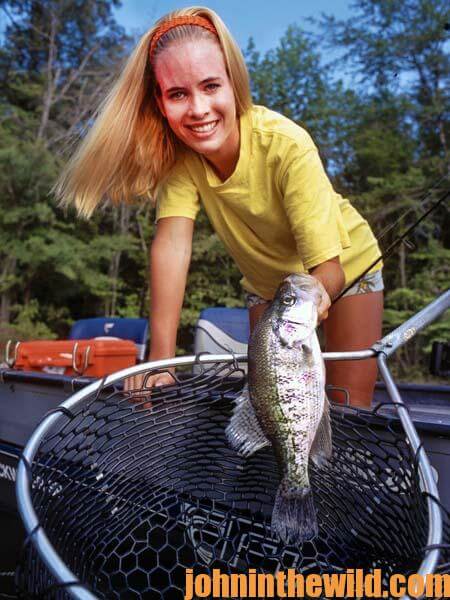 “On the best day I ever had crappie fishing, five of us caught 120 crappie, 10 inches or better, by 10:30 a.m.,” the late Steve Pope, a longtime guide on Weiss Lake near Centre, Alabama, explained. “One of my anglers fished from a wheelchair, and he really had a great day. The fish weighed from 3/4- up to 3-pounds each. Weiss Lake produces big crappie year after year. Our average crappie will weigh from 1- to 1-1/2-pounds each, and every day we catch crappie that weigh from 1-3/4- to 2-pounds each.”
“On the best day I ever had crappie fishing, five of us caught 120 crappie, 10 inches or better, by 10:30 a.m.,” the late Steve Pope, a longtime guide on Weiss Lake near Centre, Alabama, explained. “One of my anglers fished from a wheelchair, and he really had a great day. The fish weighed from 3/4- up to 3-pounds each. Weiss Lake produces big crappie year after year. Our average crappie will weigh from 1- to 1-1/2-pounds each, and every day we catch crappie that weigh from 1-3/4- to 2-pounds each.”
Crappie You See on Your Depth Finder:
But, just because a lake homes big crappie doesn’t mean everyone can catch them. Pope not only guided on Weiss Lake for almost two decades, he’d studied crappie fishing for a much longer time. “Water and weather conditions change throughout a day of crappie fishing, and if you don’t constantly change your fishing location, your fishing depth and often the color of your jig, you can’t catch big crappie consistently,” Pope said. “For instance, in the morning, during the prespawn when the fish are moving out of deeper water into more-shallow water, you may start out your morning catching fish in 6 feet of water. By the afternoon, the crappie may have moved up to within 2 feet to 1 foot of the surface. So, even though you’ve caught crappie in 6 feet of water in the morning, if you don’t fish much more-shallow in the afternoon, you won’t keep catching fish all day long.”
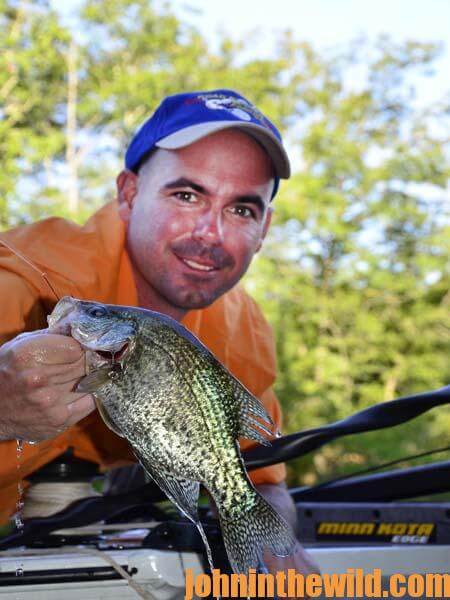 Pope also advocated deep-water crappie fishing. Even though he might fish over a 10- to 20-foot bottom, his jigs only would pass through a 2- to 10-foot segment of water over the bottom. You must know exactly at what depths the crappie hold to consistently catch big crappie. “Trolling motors don’t come with speedometers,” Pope mentioned. “Even if they did, they don’t record speeds slower than 1 mile per hour. The speed you troll at determines the depth at which a jig will travel. You can’t learn your trolling speed without some form of speedometer.” To solve this problem, Pope bought a small propeller and used different parts and pieces from various manufacturers to develop a speedometer to put on the foot of his trolling motor to tell him the speed at which he trolled. “Often, by trolling 1/10th of 1 mile an hour slower, you can catch crappie that won’t bite if you trolled faster or slower than that speed,” Pope emphasized. Today various manufacturers offer trolling motors that feature speedometers.
Pope also advocated deep-water crappie fishing. Even though he might fish over a 10- to 20-foot bottom, his jigs only would pass through a 2- to 10-foot segment of water over the bottom. You must know exactly at what depths the crappie hold to consistently catch big crappie. “Trolling motors don’t come with speedometers,” Pope mentioned. “Even if they did, they don’t record speeds slower than 1 mile per hour. The speed you troll at determines the depth at which a jig will travel. You can’t learn your trolling speed without some form of speedometer.” To solve this problem, Pope bought a small propeller and used different parts and pieces from various manufacturers to develop a speedometer to put on the foot of his trolling motor to tell him the speed at which he trolled. “Often, by trolling 1/10th of 1 mile an hour slower, you can catch crappie that won’t bite if you trolled faster or slower than that speed,” Pope emphasized. Today various manufacturers offer trolling motors that feature speedometers.
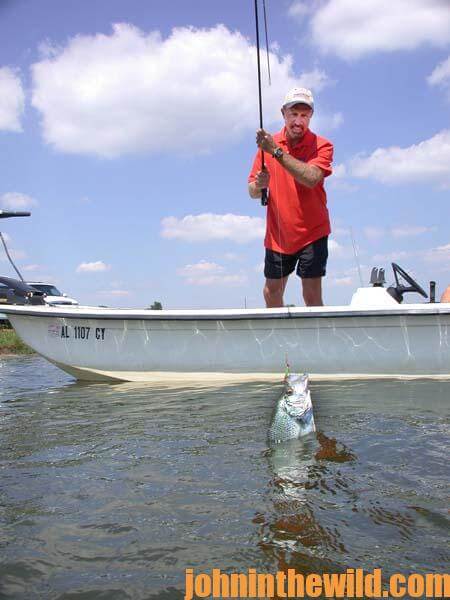 To keep up with the depth at which his jigs trolled, Pope had his anglers cast their lines out as far as they could. Next he asked them to pull off line from the reel to the first eye on the rod – a distance of about 2 feet. Then he could know at exactly at what depth his jigs would travel, based on the speed of the boat, the weight of the jig and the amount of line his anglers had out. “I always want the lines behind the boat at the same distance from the boat,” Pope told me. “Then by increasing or decreasing the speed of the trolling motor, I can keep the jigs in the depth of water where my depth finder tells me the fish are concentrating.”
To keep up with the depth at which his jigs trolled, Pope had his anglers cast their lines out as far as they could. Next he asked them to pull off line from the reel to the first eye on the rod – a distance of about 2 feet. Then he could know at exactly at what depth his jigs would travel, based on the speed of the boat, the weight of the jig and the amount of line his anglers had out. “I always want the lines behind the boat at the same distance from the boat,” Pope told me. “Then by increasing or decreasing the speed of the trolling motor, I can keep the jigs in the depth of water where my depth finder tells me the fish are concentrating.”
To learn much more about crappie fishing, get John E. Phillips’ Kindle eBooks and some print books, “Crappie: How to Catch Them Fall & Winter,” “Crappie: How to Catch Them Spring and Summer,” “Catch Cold Water Crappie Now” and “Catch Crappie All Year: Fishing a Single Pole, Using No Boat and Farming Crappie.” Click here to get these books. To receive for free the “Crappie Catchers’ Cookbook,” by John and Denise Phillips that offers free recipes, click here.

